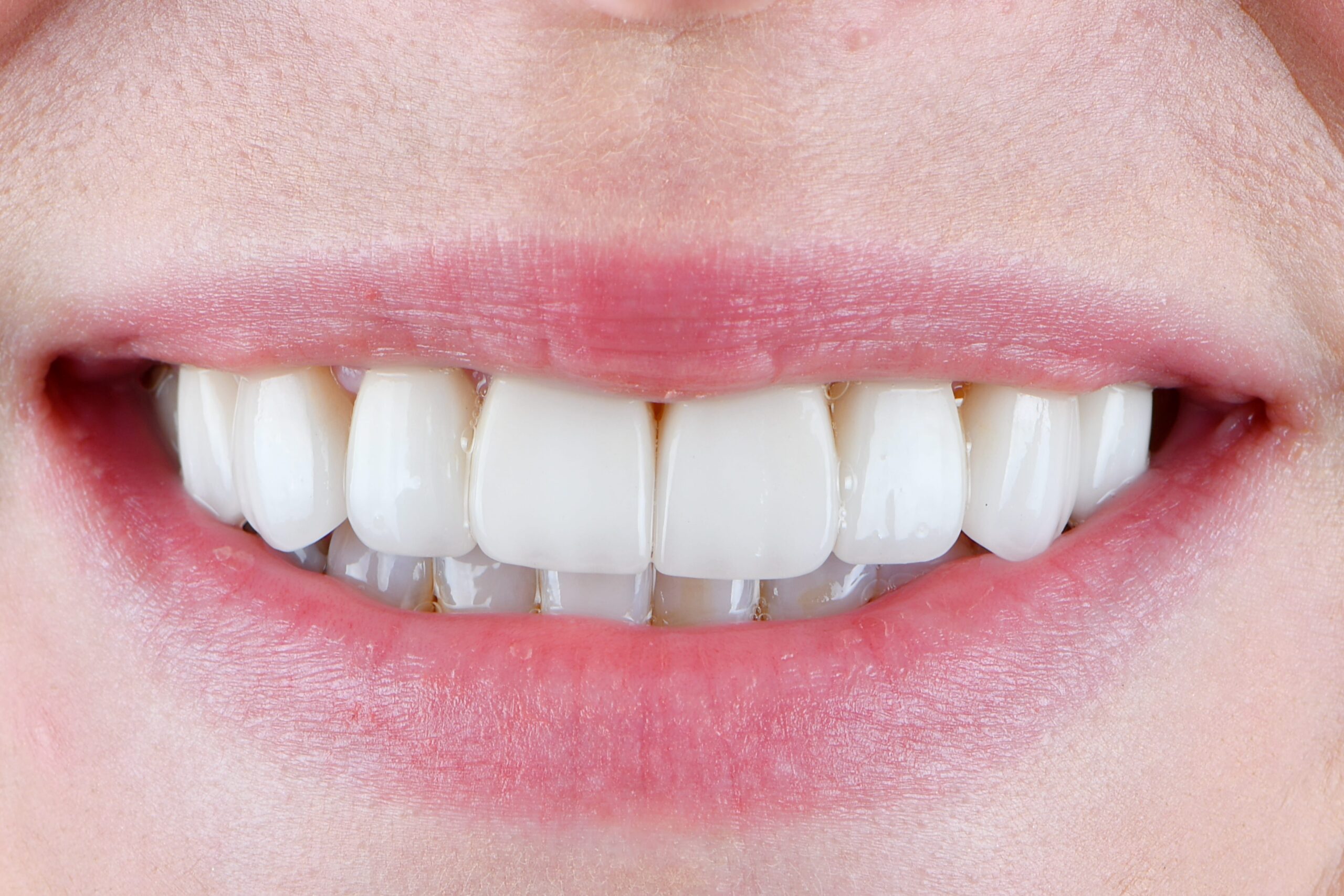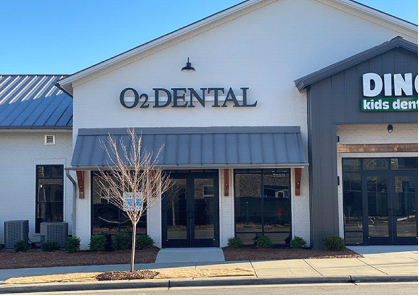Dental Bonding
Dental bonding is a cosmetic dentistry treatment that can restore the natural appearance of discolored and damaged teeth. The procedure involves the application of a tooth-colored resin to the affected tooth and hardening it using a curing light. Dental bonding can repair cracks, close gaps, and fix discolored teeth.
Although dental bonding can enhance the strength of damaged teeth, its main use is for cosmetic purposes. Dental options like porcelain veneers and dental crowns are more durable, making them ideal for restoring severely damaged teeth or for patients looking for a more long-term solution.
When is Dental Bonding Recommended?
Your dentist may recommend dental bonding for various reasons, including:
- Repairing tooth damage: Dental bonding can repair small fractures, cracks, and chips in teeth. Once the bonding material hardens, it covers the affected area and prevents the damage from progressing further.
- Correcting discoloration: Dental bonding can improve the appearance of discolored teeth. The bonding material can be matched to your original teeth’s color and applied to discolored teeth to give them an aesthetically pleasing appearance.
- Protect teeth roots: Dental bonding can address the issue of exposed teeth roots resulting from gum recession. The bonding material protects the exposed roots, reducing the risk of decay and alleviating discomfort from tooth sensitivity.
- Cosmetic enhancement: Teeth with irregular shapes can affect your smile’s quality. Using dental bonding, your dentist can enhance the appearance of misshapen teeth by shaping the bonding material to achieve a natural and aesthetically pleasing look.
- Covering exposed silver fillings: Your dentist can use the bonding material to cover exposed silver fillings and give the tooth a natural appearance.

Dental Bonding Procedure
Here’s what you can expect from a dental bonding procedure:
Consultation
Your dentist will schedule a consultation session before proceeding with the bonding treatment. During this meeting, your dentist will discuss your expectations for the procedure and answer any questions you may have about the bonding process.
Following this, the dentist will thoroughly examine your teeth to determine your eligibility for the bonding treatment. They will check for signs of tooth decay or gum disease, as such issues must be addressed before proceeding with the bonding process. Additionally, X-rays may be taken to assess the condition of your teeth’s roots, underlying soft tissue, and supportive structures.
Once your dentist is satisfied with the examination results, they will explain the bonding process and advise on the best bonding material options. Finally, your dentist will request an appointment and provide detailed instructions on preparing for the bonding treatment.
Tooth Preparation
The dentist will first clean the teeth to remove plaque or food particles. Once the teeth are clean, a mild acidic etching solution such as phosphoric acid is used to prepare the teeth’s surface for bonding. This process, known as acid etching, roughens the teeth’s surface allowing the bonding material to fuse more effectively with the teeth resulting in a stronger bond.
After the etching solution is rinsed off, a bonding agent is applied to the teeth. This bonding agent acts as an adhesive that creates a strong bond between the teeth and the composite resin material. The dentist will then match the bonding material to your natural teeth color using a shade guide.
If needed, the dentist may mold the desired tooth shape and size using a putty material to serve as a reference during the application process.
Bonding Material Application
The dentist will carefully apply a moldable resin material onto the surface of your teeth. To achieve the desired result, the dentist will use a layering technique, applying a layer of the bonding agent and then hardening it with a special curing light before moving on to the next layer.
This layering process increases accuracy and ensures the bonding agent properly fuses to the tooth. As the dentist continues layering, they carefully sculpt the bonding material until the desired tooth shape and size are achieved.
Shaping and Polishing
Once the desired tooth shape and size are achieved, the dentist will take further steps to refine its appearance and ensure it aligns with the surrounding teeth without interfering with your bite. Using a high-speed drill, the dentist carefully shapes the bonded tooth and removes any surface irregularities.
The dentist will use specialized tools such as polishing discs and rubber polishing instruments to achieve a natural sheen. Throughout the shaping and polishing process, the dentist will refer to your natural teeth to ensure the bonded tooth is aesthetically pleasing and blends seamlessly with the surrounding teeth.
Dental bonding is a straightforward procedure typically lasting 30-60 minutes per tooth. Unlike other dental procedures, anesthesia is often unnecessary since bonding doesn’t affect the nerves within your tooth. However, your dentist may still recommend or administer anesthesia to make the procedure more comfortable for you.
Pros and Cons of Dental Bonding
Benefits of Dental Bonding
Dental bonding offers numerous benefits, including:
- Easy maintenance: Unlike dental treatments such as bridges, dental bonding requires no special maintenance beyond your oral hygiene routine.
- Cost-effective: Dental bonding is an extremely cost-effective dental procedure. Though it costs less than dental crowns and porcelain veneers, it offers excellent value for its relatively low price point.
- Non-invasive: Dental bonding is a minimally invasive procedure. Unlike veneers and crowns, dental bonding doesn’t require significant alteration to the natural tooth structure.
- Fast and painless: Dental bonding is a dental procedure that typically doesn’t require anesthesia. Additionally, the procedure can take less than an hour to complete.
- Durable: While other restorative options like veneers are more durable, dental bonding can last for several years with proper care like regular brushing and flossing.
- Versatile: Dental bonding can be used to address a wide range of cosmetic imperfections, from chipped or cracked teeth to discoloration. The composite resin material used in bonding can be shaped and color-matched to your natural teeth, resulting in a seamless and natural look.
Risks of Dental Bonding
While dental bonding is a typically safe and straightforward procedure, you should be aware of the potential risks involved. These include:
- Chipping and breaking: Dental bonding may not be as durable as other dental restorative options such as veneers and crowns. The bonded material may break or fracture if exposed to excessive pressure.
- Discoloration: The composite resin material is less stain-resistant than porcelain veneers. As a result, the bonded tooth might stain over time, especially if you drink beverages like coffee and tea.
- Allergic reactions: In rare cases, you may develop an allergic reaction to the bonding material. You should contact your dentist immediately if you notice swelling or itching around the bonded tooth.
- Sensitivity: You may experience increased sensitivity in the affected tooth, especially with hot and cold foods. While this is expected, you should contact your dentist if it persists over a few days.
Aftercare for Dental Bonding
Dental bonding may last for several years with the proper care. Your dentist may provide the following maintenance instructions for the bonded teeth:
- Maintain good oral hygiene: Regular brushing and flossing will help maintain the appearance of the bonded teeth and reduce the risk of infection.
- Avoid teeth-staining foods: Certain foods and drinks, such as berries, wines, and coffee, can discolor the bonded teeth over time. If you consume such foods, make sure to rinse your mouth with mouthwash or water immediately afterward.
- Protect your teeth: It would be best if you wore a mouthguard to protect your teeth if you participate in contact sports. Also, avoid chewing on hard foods such as nuts and hard candy as they can break the bonded material.
- Brush and floss gently: Use a soft-bristled brush to clean the bonded teeth gently. Otherwise, you may damage the bonded material.
- Attend regular dental check-ups: Your dentist will help maintain the bonded teeth and address any potential issues if they arise.
Dental bonding can last between 5 and 10 years with the proper care. However, the longevity of the composite-resin material depends on your aftercare routine and the specific teeth/surfaces that are bonded. Bonding may not last as long on teeth that endure more biting or chewing forces such as the edges of front teeth.
If you want to improve your smile and enhance your teeth’s appearance, dental bonding is a painless and non-invasive treatment worth exploring.
However, like all dental procedures, you should consult your dentist to determine if dental bonding is the right choice. Don’t hesitate to contact our dental practice if you have any questions or if you would like to request an appointment.
We Offer Dental Bonding in These Cities
Schedule Today!
We look forward to meeting you. Call us or request an appointment online to set up your first visit. We’ll be in touch soon.







